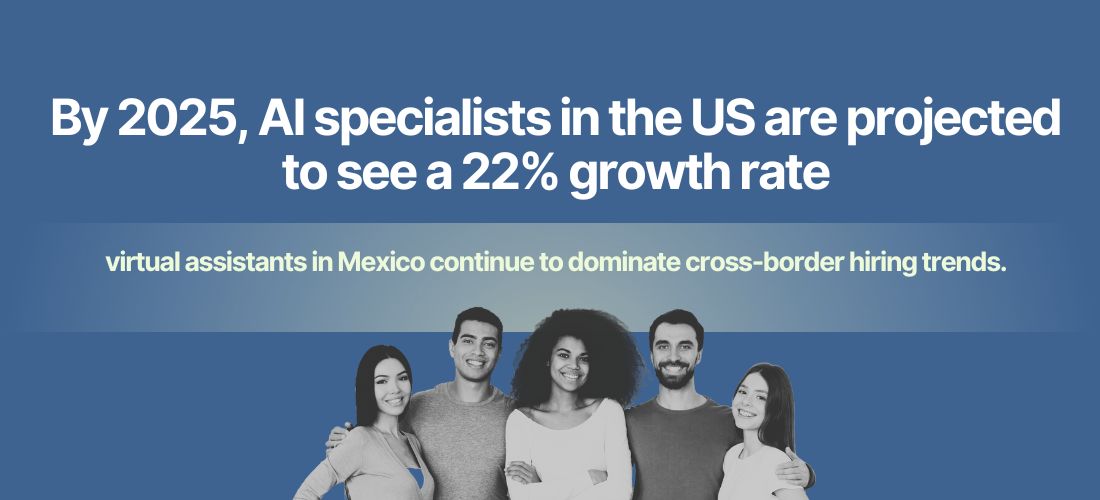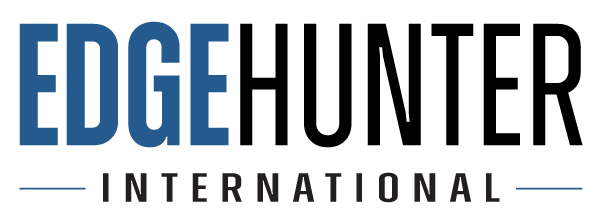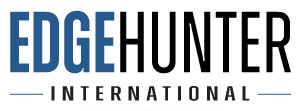The hiring landscape for 2025 is shaping up to be as dynamic as ever, especially when comparing two interconnected job markets: Mexico and the United States.
Navigating the 2025 job market means understanding the key differences between hiring in Mexico and the United States. From the most in-demand roles like virtual assistants and software developers in Mexico to AI specialists and healthcare professionals in the US, each market offers unique opportunities.
Learn how work culture, common benefits, and hiring methods vary, and uncover trends like remote-first jobs and AI-driven recruitment. Whether you’re expanding to Mexico or planning US-based hiring, this guide provides data-driven insights to help you stay ahead in a competitive talent landscape.
The Most Common Roles in Demand
In Mexico:
US companies hiring in Mexico often target roles like customer service representatives, software developers, graphic designers, and virtual assistants. Why? These positions align perfectly with Mexico’s highly skilled, bilingual workforce.
In the US:
Back home, it’s all about data analysts, healthcare professionals, and AI specialists—industries driven by tech and an aging population.

Fun stat: By 2025, AI specialists in the US are projected to see a 22% growth rate, while virtual assistants in Mexico continue to dominate cross-border hiring trends.
Market Appeal: What’s the Draw?
Mexico is increasingly appealing for its cost-effective labor, bilingual talent, and strong cultural alignment with US businesses. On the other hand, the US job market still attracts top-tier talent for its higher salaries and access to cutting-edge industries like biotechnology and renewable energy.
A real-world example?
Last year, a mid-sized US tech company shifted its customer support team to Mexico, cutting operational costs by 35%, while maintaining high-quality service. The team even scored higher on employee satisfaction surveys compared to their US counterparts.
Work Culture: Two Worlds, One Bridge
In Mexico: Expect strong family values, an emphasis on collaboration, and a tendency toward longer working relationships.
In the US: It’s all about innovation, a faster pace, and a more individualistic approach.
Here’s the kicker: Both cultures highly value work-life balance, but it manifests differently. In Mexico, weekends are sacred. In the US, hybrid work models are on the rise.
Typical Working Week
Mexico: 48-hour work weeks are common, with Saturdays sometimes included. (Yes, it’s a thing!)
US: The 40-hour standard reigns supreme, but flexible hours are becoming a major trend for 2025.
Hiring & Engagement Methods
Mexico: Many US companies leverage nearshoring and rely on Employer of Record (EOR) services to simplify compliance.
Job Search Platforms: LinkedIn, Glassdoor, Indeed, OCCMundial, and Computrabajo are popular.
Talent Acquisition: Companies like Remoto Workforce are key in sourcing talent in technology, marketing, and more.
US: The gig economy is exploding, with companies turning to freelancers and short-term contractors for niche roles.
Retention Rates: Who Stays Longer?
On average, employees in Mexico tend to stay with a company for 5-6 years, compared to 4.1 years in the US, according to recent stats. Why the difference? Mexico’s culture of job stability and loyalty plays a big role, while the US often sees employees chasing higher pay and faster career growth.
Common Benefits
In Mexico, perks like meal vouchers, private health insurance, and Christmas bonuses (aguinaldo) are standard. In the US, it’s all about 401(k)s, stock options, and increasingly, mental health days.
2025 Hiring Trends to Watch
1. Remote-first jobs: Mexico’s workforce is well-equipped to thrive in remote roles, offering companies in the US a seamless expansion.
2. AI-driven recruitment: Both markets are adopting smarter, faster ways to find talent.
3. Diverse talent pools: Inclusion remains a priority for companies in both countries.
Closing Thought:
Whether you’re hiring in the US or tapping into Mexico’s growing talent pool, 2025 promises to be a year of innovation and adaptability. The question isn’t “where do we find talent?” It’s “how do we maximize it?



